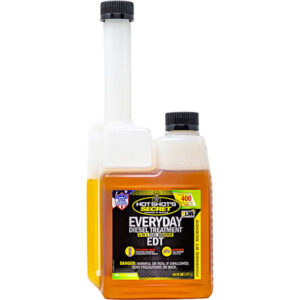
Over the years, carmakers have made many changes in their manufacturing processes and components to mitigate harmful emissions and comply with global standards. One example is the introduction of the exhaust gas recirculation (EGR) valve.
This component reduces toxic gas emissions by redistributing a portion of the engine’s exhaust gases back into the engine cylinders. In addition to reducing emissions, the EGR valve also plays a vital role in improving fuel efficiency.
Recognizing the signs of a bad EGR valve helps you address any issues promptly and prevent bigger engine problems. Learn about the most common causes of a faulty EGR valve and the best ways to solve them.
What Is an EGR Valve?
The exhaust gas recirculation valve is an automotive component invented by General Motors in the 1970s. Its use became widespread in 1993 in compliance with European emissions standards — and eventually, the United States Environmental Protection Agency’s emission and fuel standards for motor vehicles.
The primary function of EGR valves is to reduce toxic gas emissions by recirculating between 5% and 35% of the engine’s exhaust gases back to the engine cylinders. These valves also help reduce the formation of harmful nitrogen oxide (NOx) emissions by lowering combustion temperatures.
In addition to recirculating NOx emissions, the EGR valve is essential to maintaining engine efficiency. It helps ensure proper combustion and improves fuel economy, which means more miles traveled for every gallon of fuel. When an EGR valve starts to become defective, it could mean poor combustion and higher emissions for the vehicle. Identifying symptoms of a faulty EGR valve helps car owners avoid these concerns and potential violations of emission regulations.
How the EGR Valve Works
The EGR valve is the main component of a vehicle’s EGR system. While its location may vary depending on the car model, it’s typically located between the intake and exhaust manifolds or close to them. In terms of positioning, the EGR valve is often mounted to ensure the even distribution of gas to all cylinders. It’s designed to open and allow exhaust gases to mix with the air-fuel mixture.
An EGR valve reduces the amount of oxygen and increases water vapor in the combustion mixture. This results in a lower combustion temperature, thereby reducing the amount of NOx produced by the engine.
The EGR valve begins functioning once the engine starts and reaches the correct operating temperature. When the vehicle picks up speed, the EGR valve begins regulating the flow of exhaust gases in the system. As the vehicle comes to a halt, the EGR valve returns to its closed position to prevent exhaust gases from escaping.
Types of EGR Valves
Different types of EGR valves are available, each with unique features and configurations. The main types of EGR valves are:
- Diesel EGR valves
- Electronic EGR valves
- Vacuum-operated EGR valves
- Digital EGR valves
- Pneumatic EGR valves
- Hydraulic EGR valves
What Are the Symptoms of a Bad EGR Valve?
Since the EGR valve is an engine component, it’s common for EGR valve failure symptoms to be similar to other engine problems. Watch out for these common signs in your car if you suspect a bad EGR valve:
- Poor engine performance: An EGR valve that’s stuck open may disrupt the vehicle’s air-fuel ratio, leading to engine performance issues. These can include poor acceleration, stalling or power loss, especially when driving uphill.
- Check engine light: Your engine control module can detect a problem with the EGR valve, which may trigger the check engine light signal on your dashboard.
- Increased fuel consumption: Problems with the EGR valve can lead to higher temperatures in the combustion chamber. This causes incomplete combustion, leaving unburned fuel in the exhaust — which can result in reduced fuel efficiency and higher NOx emissions.
- Knocking sounds: Engine pinging or knocking sounds, especially when accelerating or driving under loads, often signify an increase in detonation or combustion temperature.
- Failed emissions test: An EGR valve’s main purpose is to reduce NOx emissions, so a problematic EGR valve may make it difficult to control NOx levels.
How to Tell if an EGR Valve Is Bad
A proper diagnosis is the best way to address EGR valve malfunction symptoms and determine the next course of action. You can see if your vehicle has a bad EGR valve by using:
- Visual inspections: Doing a visual check of your EGR valve and the entire engine assembly can help you locate potential problems.
- Diagnostic codes: Run your vehicle’s on-board diagnostics and check for trouble codes to verify if the problem is with the EGR valve or a different engine component.
- Vacuum or pressure tests: Apply a vacuum or pressure to the EGR valve and check idle quality. If you don’t see a significant change in idle quality, the valve could be faulty or clogged.
- Sound and performance tests: Monitor engine performance and be wary of knocking sounds while driving.
Common Causes of EGR Valve Failure
Like other engine components, the EGR valve is exposed to frequent wear and tear, making it susceptible to damage over time. You may notice symptoms of a bad EGR valve for many reasons, including:
- Carbon buildup: The vehicle’s combustion process may cause carbon deposits to build up in the valves and other components of the engine assembly, creating blockages and leading to malfunctions.
- Vacuum leaks: For EGR systems using vacuum pressure, leaks within the vacuum lines may cause insufficient pressure and malfunction. They can also lead to clogging and cause the valve to get stuck.
- Electrical issues: Faulty wiring and malfunctioning sensors can lead to operational problems for electronic EGR systems. If you notice your check engine light, one possible cause is an issue with the valve sensor.
- Contaminated fuel: Using poor-quality fuel can increase carbon deposits, which may affect the function of the EGR valve.
- Thermal issues: Excessive heat resulting from poor combustion can warp the valve and other components of the EGR system, causing it to get stuck open.
Preventive Maintenance to Ensure EGR Valve Longevity
EGR valve maintenance doesn’t always require disassembly. In fact, effective preventive maintenance often prevents this need. Follow these simple tips to improve your EGR valve’s longevity and avoid engine issues for your car.
1. Inspect Signs of Trouble Right Away
Regular inspection and diagnosis are among the best ways to keep your EGR valve in check. Once you notice signs of a faulty EGR valve, the first thing you need to do is check for possible issues. Do a thorough visual sweep of your system to spot carbon deposits, cracks, leaks or disconnected wiring.
Use an OBD-II scanner if you want a more thorough diagnosis without the hefty costs of professional mechanic services. Take note of common EGR fault codes, such as P0401 for insufficient flow and P0402 for excessive flow.
2. Clean Your EGR Valve Regularly
Frequent cleaning does wonders for the overall health and performance of your EGR valve. Simply remove the valve from the engine and clean it using a reliable carburetor cleaner and a small bristle brush to dislodge carbon deposits. You can also try using a fuel injector cleaner to prevent clogging and improve fuel efficiency.
3. Replace the Air Filter as Needed
Air and fuel naturally mix together to power a vehicle’s engine. When unburned fuel escapes the exhaust, the EGR valve works to recirculate it through the engine. But sometimes, a disproportionate amount of air-fuel ratio can be too much for the EGR valve to handle. The usual culprit is a defective air filter. Replace your air filter frequently to enhance EGR system flow, prevent improper combustion and reduce carbon deposits.
4. Change the Oil Regularly
Oil changes are essential to the optimal function of the EGR valve and the rest of the engine assembly. They help prevent contamination that may lead to premature engine wear. Additionally, periodic oil changes can reduce carbon deposits that may affect EGR valve efficiency.
5. Use High-Quality Fuel
Sticking to high-quality fuel is a cost-effective way to prolong the life span of your EGR valve. It gives you better fuel economy and helps prevent carbon buildup because it contains fewer impurities.
6. Try Fuel Additives
Fuel additives also help keep your EGR circuit and intake valves free of soot. Their unique formulation removes all internal deposits and helps provide maximum performance while cleaning your system. Explore a wide range of fuel additives from Hot Shot’s Secret to find the best fit for your needs.
7. Follow Manufacturer Guidelines
EGR valves can vary greatly depending on the make and model. To ensure longevity and avoid frequent encounters with faulty EGR valve symptoms, always adhere to the manufacturer’s guidelines regarding use and maintenance.
Frequently Asked Questions
Get answers to some of the most common questions about faulty EGR valves.
Can You Drive With a Bad EGR Valve?
Yes, but it comes with risks. A malfunctioning EGR valve could cause increased emissions, which could lead to civil penalties. It can also cause engine performance issues that could impact your safety.
How Long Does an EGR Valve Last?
EGR valves typically have a life span of 50,000 to 100,000 miles. Once you go over this range, it’s best to check for possible bad EGR valve symptoms. It’s also important to note other factors that could affect its longevity.
Can a Bad EGR Valve Cause Engine Damage?
If left unattended, a bad EGR valve can create cracked blocks and warped heads in your engine due to the overheating caused by incomplete combustion. Over time, EVR valve issues can lead to further engine damage or performance degradation.
How Much Does It Cost to Replace an EGR Valve?
Replacement costs for a faulty EGR valve can vary according to the car’s make and model. It also depends on whether you’re looking to replace the entire valve assembly or just a few parts.
Choose Hot Shot’s Secret for Premium Fuel Additives
The EGR valve is crucial to the performance of your vehicle, particularly its engine system. Familiarizing yourself with defective EGR valve symptoms makes it easier to pinpoint the problem and perform the necessary solutions. At Hot Shot’s Secret, we provide an extensive selection of scientifically proven products formulated to help you solve and maintain engine health.
Our products are cost-effective solutions to keeping your engine clean, lubricated and performing optimally. Browse our product selection or contact us for expert recommendations.




